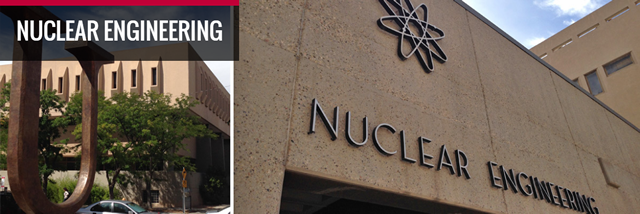
Nuclear Engineering ETDs
Publication Date
6-23-2015
Abstract
The subject of this dissertation is a moment-preserving Monte Carlo electron transport method that is more efficient than analog or detailed Monte Carlo simulations, yet provides accuracy that is statistically indistinguishable from the detailed simulation. Moreover, the Moment-Preserving (MP) method is formulated such that it is distinctly different than Condensed History (CH) methods making the MP method free of the limitations inherent to CH and proving a viable alternative for transporting electrons. Analog, or detailed, Monte Carlo simulations of charged particle transport is computationally intensive; thus, it is impractical for routine calculations. The computational cost of analog Monte Carlo is directly attributed to the underlying charged particle physics characterized by extremely short mean free paths (mfp) and highly peaked differential cross sections (DCS). As a result, a variety of efficient, although approximate solution methods were developed over the past 60 years. The most prolific method is referred to as the Condensed History method. However, CH is widely known to suffer from inconsistencies between the underlying theory and the application of the method to real, physical problems. Therefore, it is of interest to develop an alternative method that is both efficient and accurate, but also a completely different approach to solving the charged particle transport equation that is free of the limitations inherent to CH. This approach arose from the development of a variety of reduced order physics (ROP) methods that utilize approximate representations of the collision operators. The purpose of this dissertation is the theoretical development and numerical demonstration of an alternative to CH referred to as the Moment-Preserving method. The MP method poses a transport equation with reduced order physics models characterized by less-peaked DCS with longer mfps. Utilizing pre-existing single-scatter algorithms for transporting particles, a solution to the aforementioned transport equation is obtained efficiently with analog level accuracy. The process of constructing ROP models and their properties are presented in detail. A wide variety of theoretical and applied charged particle transport problems are studied including: calculation of angular distributions and energy spectra, longitudinal and lateral distributions, energy deposition in one and two dimensions, a validation of the method for energy deposition and charge deposition calculations, and response function calculations for full three-dimensional detailed detector geometries. It is shown that the accuracy of the MP method is systematically controllable through refinement of the ROP models. In many cases, efficiency gains of two to three orders of magnitude over analog Monte Carlo are demonstrated, while maintaining analog level accuracy. That is, solutions generated sufficient ROP DCS models are statistically indistinguishable from the analog solution. To maintain analog level accuracy under strict problem conditions, small efficiency gains are realized. However, loss of efficiency under these conditions is true of all approximate methods, but the MP method remains accurate where other methods may fail. That is not to say the MP method does not suffer from limitations because the MP method will result in discrete artifacts when the problems conditions are strict. However, where limitations of the method arise, they are overcome through systematic refinement of the ROP DCS models required by the method. In addition to accuracy and efficiency results, it is shown that the MP method does not require a boundary crossing or pathlength correction algorithm, which is in great contrast to the CH method. Finally, implementation and maintenance of the MP method was found to be straightforward and requires significantly less effort than CH when measured by the number of lines of code required for each method. In particular, as compared with the class II CH method utilized in the Geant4 standard electromagnetic physics list. Ultimately, the MP is shown to be accurate, efficient, versatile, and simple to implement and maintain.
Keywords
Monte Carlo, Electron Transport, Moment-preservation
Sponsors
Air Force Research Laboratory
Document Type
Dissertation
Language
English
Degree Name
Nuclear Engineering
Level of Degree
Doctoral
Department Name
Nuclear Engineering
First Committee Member (Chair)
Franke, Brian
Second Committee Member
Brown, Forrest
Third Committee Member
de Oliviera, Cassiano
Fourth Committee Member
Luan, Sean
Fifth Committee Member
Lindstrom, Chadwick
Recommended Citation
Dixon, David. "A Computationally Efficient Moment-Preserving Monte Carlo Electron Transport Method with Implementation in Geant4." (2015). https://digitalrepository.unm.edu/ne_etds/12


